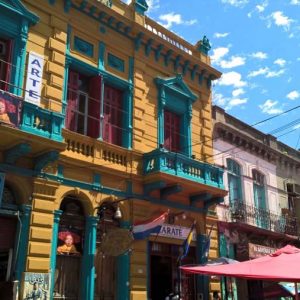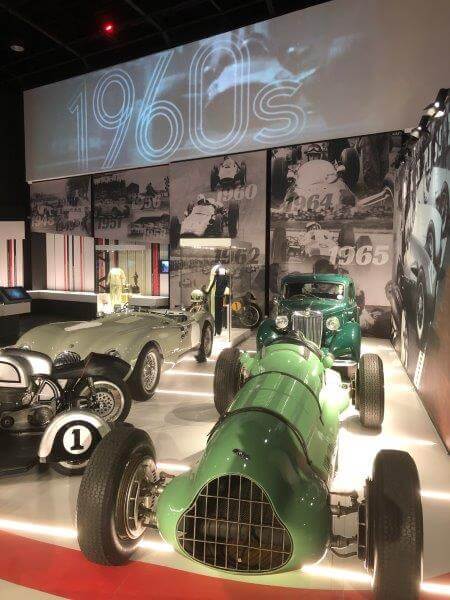 Nobody could ever take me for a petrolhead. I don’t mind what car I drive so long as it gets me there safely, and the only thing that even vaguely interests me about a Grand Prix is who won. So I readily admit to little more than passing curiosity about The Silverstone Experience, the culmination of a seven-year project that was unveiled to the public in October 2019, only to close again four months later because of the Covid-19 pandemic.
Nobody could ever take me for a petrolhead. I don’t mind what car I drive so long as it gets me there safely, and the only thing that even vaguely interests me about a Grand Prix is who won. So I readily admit to little more than passing curiosity about The Silverstone Experience, the culmination of a seven-year project that was unveiled to the public in October 2019, only to close again four months later because of the Covid-19 pandemic.
But how wrong can you be? Within minutes of arriving at the restored World War II aircraft hangar, transformed into a slick new visitor attraction with the help of a Heritage Lottery Fund grant, I can see that this really is a day out with something for everyone. Even me.
My husband and I visit the Silverstone Experience in mid-July on the first day of reopening after lockdown, just ahead of this year’s two Grand Prix races, due to be staged without spectators in late July and early August. Parking is free and plentiful and, arriving at midday, we walk straight into without queueing, having had our temperatures taken outside with a magic zapper by a friendly volunteer.
At the ticket desk, we are told about the plentiful hand sanitising stations, wipes, and other anti-viral measures in place around the site. Every visitor is also given a sanitised stylus with which to operate any touch screens. The ground floor café at the back of the building looks over the circuit towards the stands, tables well-spaced and all cakes, biscuits and cutlery individually wrapped for maximum hygiene.
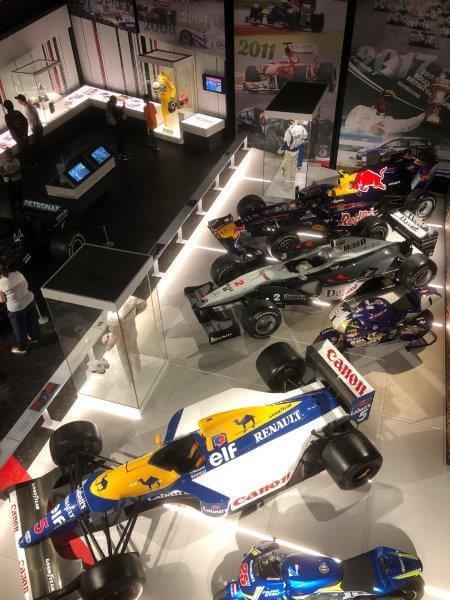 So after a mood-enhancing coffee and cake, we begin our visit on the first floor with an atmospheric immersive film that showcases racing cars across the decades. If you don’t like loud noise or flashing lights, it’s easy to bypass. When the doors open, you have stepped back in time to the Middle Ages when the area around today’s sporting venue belonged to Luffield Abbey. Here we discover the ecclesiastical references behind some of the track’s most iconic sections: Becketts, Chapel, Abbey, and of course, Luffield.
So after a mood-enhancing coffee and cake, we begin our visit on the first floor with an atmospheric immersive film that showcases racing cars across the decades. If you don’t like loud noise or flashing lights, it’s easy to bypass. When the doors open, you have stepped back in time to the Middle Ages when the area around today’s sporting venue belonged to Luffield Abbey. Here we discover the ecclesiastical references behind some of the track’s most iconic sections: Becketts, Chapel, Abbey, and of course, Luffield.
In 1941, the Air Ministry requisitioned the 600 acres of agricultural land on which the circuit now sits and RAF Silverstone became a training centre for pilots of Wellington bombers. As you look at the artefacts on display and ‘meet’ some of the war heroes who also made their mark on motorsport, you are standing inside a hangar that once hid Wellingtons from prying enemy eyes.
After the war, the disused airfield was an ideal venue for the resumption of motor sport and with the help of the British Racing Drivers’ Club, the first Grand Prix took place here in 1948. Today, Farm Curve takes its name from the agricultural activity that went on here alongside the circuit from the 1940s right up to the 1990s.
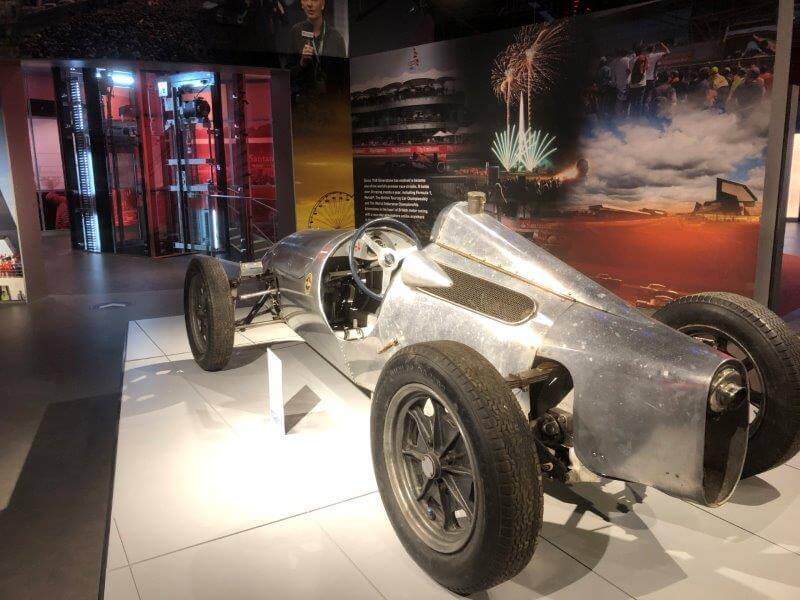 By now I’m beginning to appreciate that Formula 1 isn’t just about sitting behind a wheel and steering round a circuit. Panels dotted throughout the upper floor display the drivers’ speeds at different sections of track. An eye-watering 78mph in Gear 3 on the tight bend of Luffield Curve, but add another 100mph plus on the fast left kink of Chapel Curve, before hitting a top speed of 201mph at Hangar 9. Suddenly I’m looking at their achievements with more respect.
By now I’m beginning to appreciate that Formula 1 isn’t just about sitting behind a wheel and steering round a circuit. Panels dotted throughout the upper floor display the drivers’ speeds at different sections of track. An eye-watering 78mph in Gear 3 on the tight bend of Luffield Curve, but add another 100mph plus on the fast left kink of Chapel Curve, before hitting a top speed of 201mph at Hangar 9. Suddenly I’m looking at their achievements with more respect.
Last exhibit on the upper floor is a 1948 Cooper MK II which, to me, looks no more substantial than a tin can on wheels, but nine of these took part in the first Grand Prix here. And when I look over the balustrade beyond it, the history of Silverstone motor sport is spread out below in a technicolour display of gleaming metalwork. Not just Formula 1, but rally cars, motorbikes and the full range of vehicles which in a normal year, would compete on the Silverstone track between March and October.
I find myself surprisingly interested in the section on track safety and the stories of lucky escapes; the virtual pit lane; and – right up my street – the section on press and TV coverage. But I also enjoy the small screens displaying filmed interviews with drivers, and the wealth of artefacts donated by some of the biggest names in the business. 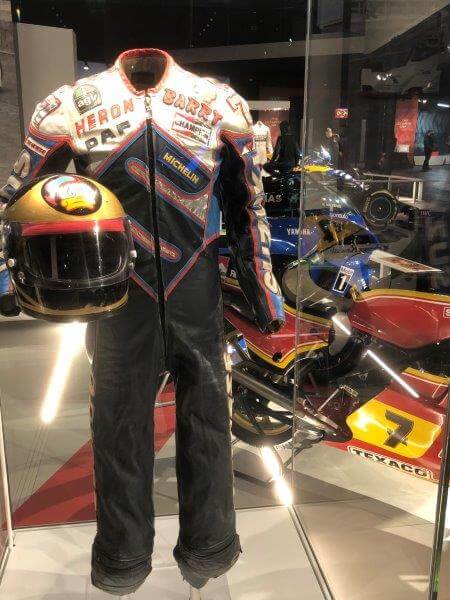 Racing suits worn by Barry Sheene and Lewis Hamilton. Helmets encasing the heads of Damon Hill and Michael Schumacher. And of course, those extraordinary cars. Finally, we take our seats for a virtual lap of the track combining vehicles of all kinds and ages in a wacky, high-octane contest.
Racing suits worn by Barry Sheene and Lewis Hamilton. Helmets encasing the heads of Damon Hill and Michael Schumacher. And of course, those extraordinary cars. Finally, we take our seats for a virtual lap of the track combining vehicles of all kinds and ages in a wacky, high-octane contest.
Back out in daylight, we head outdoors to stroll the heritage trail that hugs the outside edge of the track bordering Priory Corner, another nod to the medieval monastery. A touring car is doing high-speed practice circuits beyond the security fence, which really adds to the atmosphere, and overhead, a lone Spitfire does its own circuit, perhaps a practice run for an appearance on Grand Prix day.
By the time we head out through the retail temptations of the shop, we have spent three hours engrossed in this fascinating attraction. Watch all the films and read every panel, and you could spend longer. Children can have fun with a free Kids’ Trail sheet that offers prizes to those who complete the challenges.
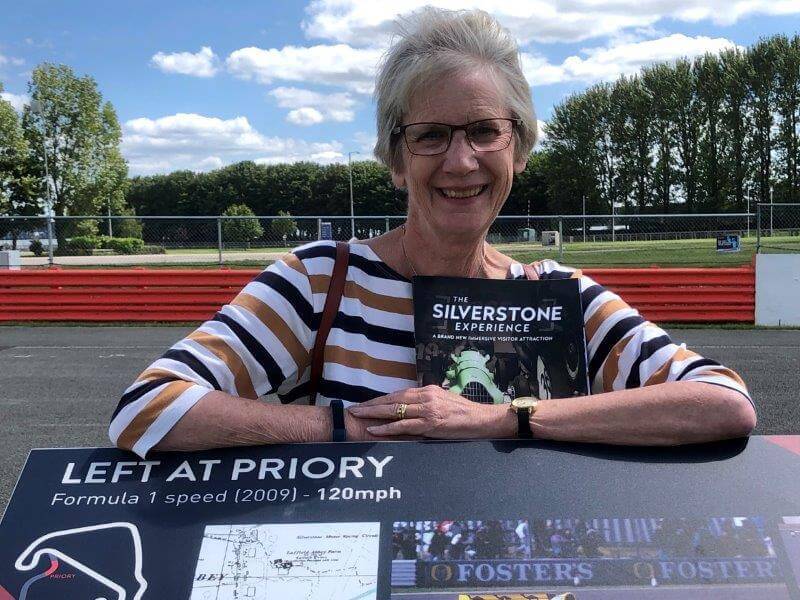 It’s certainly been good to see so many families enjoying the exhibits, given that one key aim of the Silverstone Experience is to encourage the younger generation to take up careers in the STEM subjects of Science, Technology, Engineering and Maths. You could even add a second M for Motorsport. Looking back as a Silver Traveller, I think my career could well have taken a very different path if only my imagination had been fired up by an attraction as compelling as this one.
It’s certainly been good to see so many families enjoying the exhibits, given that one key aim of the Silverstone Experience is to encourage the younger generation to take up careers in the STEM subjects of Science, Technology, Engineering and Maths. You could even add a second M for Motorsport. Looking back as a Silver Traveller, I think my career could well have taken a very different path if only my imagination had been fired up by an attraction as compelling as this one.
More information
The Silverstone Experience is located in Northamptonshire, 20 minutes from Junction 15a of the M1 and Junction 10 of the M40. At the time of writing, all tickets must be booked in advance – Adults, £20; Concessions, £16; Child, 5-15, £10; family tickets available. For more information, visit silverstone-experience.co.uk


